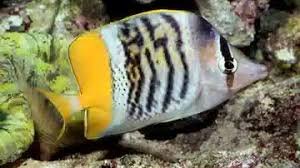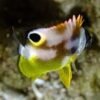Exploring the Role of Dragons in Festivals and Traditional Rituals of China’s Ethnic Minorities
China is home to 56 officially recognized ethnic groups, each with its own unique customs, traditions, and beliefs. Among the many shared cultural symbols in China, the dragon (龙, lóng) holds a special place in the folklore and traditions of various ethnic minorities. While the Han majority has long revered dragons as symbols of power, prosperity, and cosmic balance, many ethnic minority groups incorporate dragon mythology into their distinct religious practices, festivals, and seasonal ceremonies.
In these traditions, dragons are often seen as protectors of nature, water deities, ancestors, or spiritual intermediaries. This article explores the diverse roles of dragons in the festivals and rituals of several prominent ethnic minorities in China, including the Zhuang, Miao, Dong, Bai, Yao, and Tujia peoples.
1. The Zhuang People: Water Dragons and Rain-Praying Festivals
The Zhuang ethnic group, the largest minority in China, primarily inhabits Guangxi Zhuang Autonomous Region. Their culture is deeply influenced by animism and nature worship, and dragons play a crucial role in their agricultural rituals and water-related ceremonies.
The Dragon Worship and Rain-Praying Rituals
The Zhuang believe in water dragons as rain deities responsible for controlling seasonal rainfall. To ensure good harvests, villagers hold rain-seeking ceremonies dedicated to the Dragon King (龙王, Lóng Wáng).
- Rain-Seeking Festival (求雨节, Qiú Yǔ Jié): During severe droughts, the Zhuang perform dragon dances and water rituals to appease the Dragon King. Offerings of rice, fish, and wine are placed at rivers or wells believed to be dragon dwellings.
- Water-Splashing Ceremony: Similar to Thailand’s Songkran, Zhuang people splash water on each other to symbolize the dragon blessing the land with rain.
- Dragon Drums and Songs: Sacred drumming and folk songs tell stories of dragons summoning storms, reinforcing the connection between water dragons and agricultural cycles.
2. The Miao People: Dragons in Coming-of-Age and Ancestral Worship
The Miao (Hmong) people, primarily located in Guizhou, Hunan, and Yunnan, have rich oral traditions and spiritual beliefs that incorporate dragons as ancestral spirits and symbols of transformation.
The Dragon Dance in the Miao New Year Festival
During Miao New Year (苗年, Miáo Nián), celebrated between October and December, dragon-related rituals play a vital role:
- Dragon Totem Worship: Many Miao villages carve wooden dragon totems as spiritual guardians that protect their families and homes.
- Dragon Dances for Protection: Performed at night, the dance represents a mystical dragon warding off evil spirits and blessing families with prosperity.
- Dragon Sacrifices and Offerings: Miao elders offer oxen and poultry to ancestral dragons, believing that their spirits bring health and happiness to their descendants.
The Dragon Bridge Ritual for Young Men
A unique coming-of-age ceremony among the Miao involves crossing the “Dragon Bridge” (龙桥, Lóng Qiáo):
- Young boys prove their strength and courage by walking barefoot across a symbolic dragon bridge made of wood and bamboo.
- Successfully crossing the bridge represents gaining wisdom and dragon-like strength, preparing them for adulthood and responsibilities.
3. The Dong People: Dragons as Cultural Patrons of Music and Bridges
The Dong ethnic group, known for its polyphonic singing and wooden architecture, believes dragons inhabit rivers and mountains, guiding their artistic and agricultural practices.
The Dragon Canoe Festival
The Dragon Canoe Festival (龙舟节, Lóng Zhōu Jié) among the Dong is similar to the Han Dragon Boat Festival, but with its own unique elements:
- Dragon-head canoes are launched in village rivers, symbolizing the protection of the river gods.
- Chants and drum performances are played to awaken the dragon spirit, ensuring fertile lands and harmonious weather.
- After the race, the canoes are stored in temples, where they are blessed by Dong elders.
The Dragon Bridges of Dong Villages
The Dong people also build Dragon Bridges (风雨桥, Fēngyǔ Qiáo):
- These wooden-covered bridges are said to be built under dragon spirits’ guidance.
- Villagers pray on the bridge for safe travels and good harvests.
- Some bridges have dragon carvings to ward off misfortune and invite prosperity.
4. The Bai People: Dragons in Buddhist and Daoist Rituals
The Bai people, concentrated in Yunnan Province, blend Buddhism, Daoism, and dragon mythology into their religious ceremonies.
The Dragon King Festival at Erhai Lake
The Bai hold the Dragon King Festival (龙王节, Lóng Wáng Jié) at Erhai Lake, one of their most sacred sites:
- Local priests offer incense, flowers, and tea to the Dragon King Temple, seeking protection from floods.
- Dragon-themed processions carry sacred Buddhist relics to honor the lake’s dragon spirit.
- Participants release paper dragon boats on the water, symbolizing purification and renewal.
Dragon Statues in Bai Temples
Bai architecture features intricate dragon carvings in temples:
- “Nine Dragons Wall” (九龙壁, Jiǔ Lóng Bì) is a sacred mural depicting dragons controlling the cosmos.
- Monks perform dragon chants during Lunar New Year, inviting divine protection for the coming year.
5. The Yao and Tujia People: Dragons as Spiritual Ancestors
Both the Yao and Tujia ethnic groups revere dragons as ancestral spirits that guide family prosperity and lineage.
The Yao “Dragon Mother” Festival
Among the Yao people, the dragon is sometimes seen as a maternal figure, referred to as the Dragon Mother (龙母, Lóng Mǔ).
- Women participate in prayers and songs that ask for fertility and family well-being.
- Small dragon figurines are placed near the household altar to ensure harmony and good fortune.
Tujia Dragon Totems in Funeral Rites
For the Tujia ethnic group, dragons play a role in funerary traditions:
- Dragon-shaped coffins symbolize the deceased returning to the heavens.
- Families carve dragon emblems on ancestral tablets, believing they carry messages to the afterlife.
- The Dragon Spirit Ceremony is performed after 49 days of mourning, where monks burn dragon effigies to guide the soul’s journey beyond.
Conclusion
Across China’s ethnic minorities, dragons serve as powerful spiritual symbols, deeply embedded in festivals, religious ceremonies, and community traditions. Whether summoning rain, protecting villages, guiding spirits, or marking seasonal transitions, these mythical creatures reflect the diverse ways in which China’s cultural heritage connects nature, ancestry, and cosmic balance.
Through rituals such as the Zhuang rain prayers, Miao dragon bridges, Dong dragon boats, Bai temple festivals, and Yao dragon mother celebrations, the legacy of dragons continues to shape and enrich ethnic traditions in China today.



